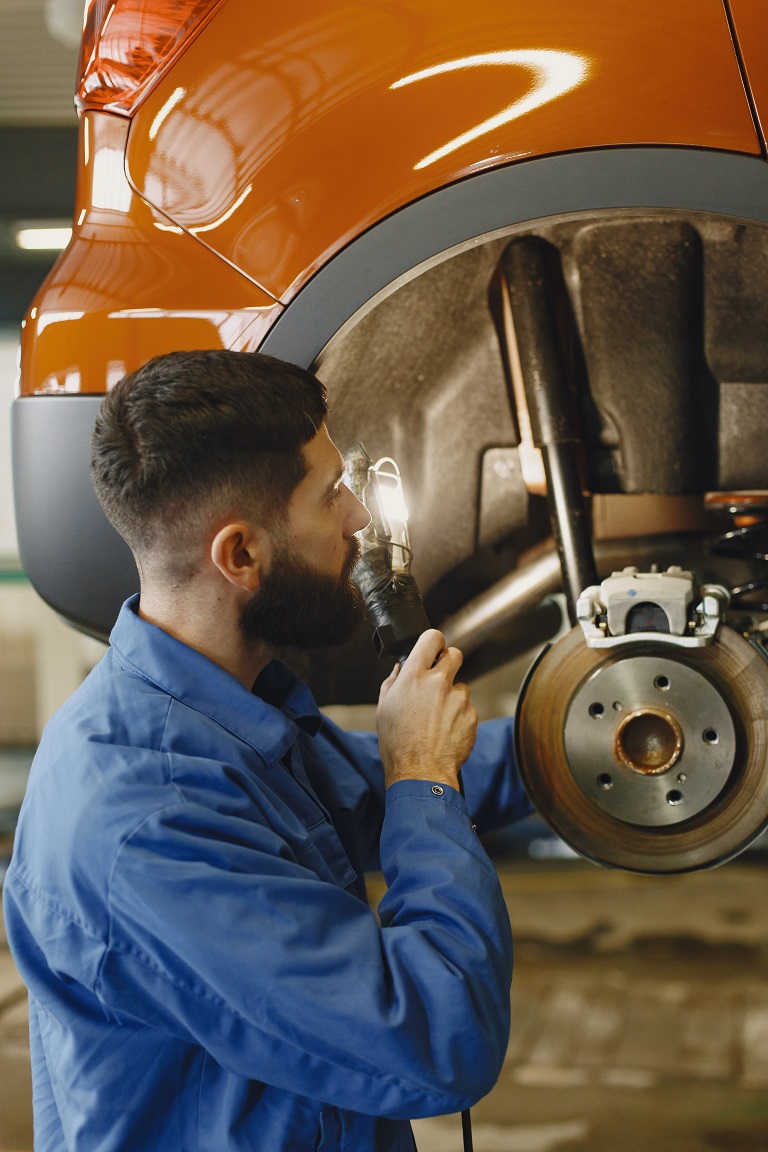You are driving in Milwaukie to grab dinner Friday night. There is a lot of traffic as you are right at the end of rush hour. Suddenly, a car pulls out just feet from you as you are going the full speed limit. You slam the brakes and the car responds, your vehicle stopping within inches of what might have been an accident. It is all made possible by incredible engineers trying to keep you safe.
As long as you maintain your brake system, problems with braking will be very very rare. However, there is a lot that goes into that one action. Here is a simple explanation of the main parts of your braking system and how they work together.
- Brake pedal: When you press the brake pedal, it transmits your input to the braking system.
- Master cylinder: The brake pedal connects to the master cylinder, which contains hydraulic fluid, aka brake fluid. When you press the pedal, it pushes the fluid through the brake lines.
- Brake booster: The brake booster helps amplify the force applied to the brake pedal, making it easier to stop the vehicle. Most brake boosters use the vacuum created by your engine to create this additional force.
- Brake calipers: The brake fluid reaches the brake calipers located at each wheel. Inside the calipers, there are pistons that are actuated by the hydraulic pressure.
- Brake pads and rotors: The calipers house brake pads, which are pressed against the rotating brake rotors when you apply the brakes. The friction between the pads and rotors slows down and eventually stops the vehicle.
When should my brake system get serviced?
Regarding the condition of your brake pads, it’s difficult to determine without inspecting them directly. However, there are a few signs that may indicate you need new brake pads:
Squealing or grinding noise: If you hear high-pitched squealing or a grinding noise when braking, it could indicate that your brake pads are worn down and need replacement.
Reduced braking performance: If you notice a decrease in your vehicle’s stopping power, it could be due to worn brake pads.
Visual inspection: In some cases, you may be able to visually inspect the brake pads through the wheels. If the pads appear excessively thin (less than a quarter-inch), it’s a sign they need replacement.
Brake fluid should be serviced when it is dirty or high in moisture. Brake fluid is a hydrophilic fluid, which means it absorbs water. Many manufacturers, such as Honda, Subaru, Nissan and others, recommend replacing brake fluid every 3 years or 30,000 miles.
To accurately assess your brake pads or brake fluid, it’s best to Same Day for assistance. We can inspect your vehicle’s braking system and provide you with appropriate recommendations based on the results of that inspection.



